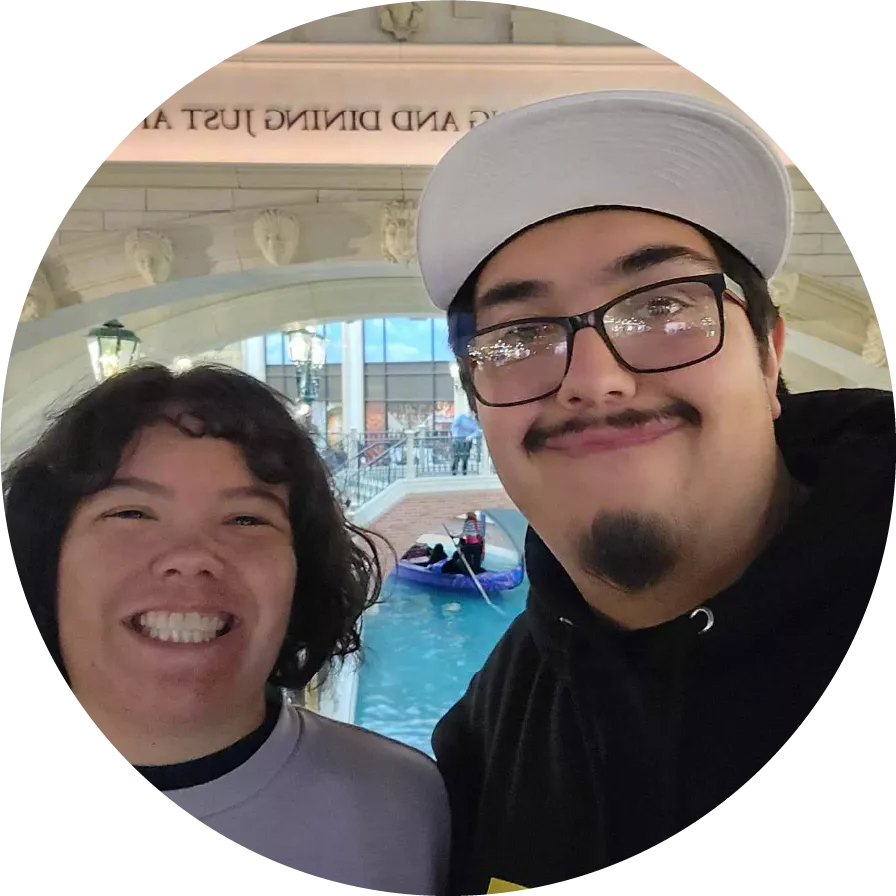Why Distance Education?
Institutions of higher education are being challenged to provide high quality learning opportunities in the face of shifting market conditions and declining budgets. Many schools and colleges are coming to the same conclusion: the only way to constructively respond to this challenge is by developing distance education programs that apply technological innovation to the fastest growing market in higher education — adults. That’s the key. University education is no longer the exclusive domain of eighteen year olds. Many students today are middle-aged. They are more goal- and task-oriented. They want and need to learn. They are not looking for an extended adolescence free of the style-cramping constraints of home.
What is distance education anyway? A few decades ago, at least in United States, the only answer was correspondence schools. People “mailed away” for a course and received books and lessons by return mail. After completing the lessons, the student took an examination. Interaction between the student and the “instructor” varied but most often was minimal. The quality of the courses varied widely. A lot has changed since then. Though you can still take correspondence courses, the quality has improved; and there are a lot more options for folks who want more support than offered by the traditional correspondence method.
As with any rapidly emerging field, there is some disagreement among proponents as to what ought be allowed under the “distance education” tent and what should be excluded. As a result, the definition of distance education varies from one organization to another.
Distance Education And Training Council (DETC)
The Distance Education and Training Council, formerly known as The National Home Study Council, is currently the only agency recognized by the federal government as the specialized accreditor of off-campus learning programs. DETC has authority to accredit everything from high school and vocational-technical training through the academic Master’s degree. (It is currently running a pilot project in support of its desire to accredit professional doctorates as well.) DETC says distance education is the enrollment and study with an educational institution which provides lesson materials prepared in a sequential and logical order for study by students on their own. When each lesson is completed the student makes available, by fax, mail, or computer, the assigned work for correction, grading, comment, and subject matter guidance by qualified instructors. Corrected assignments are returned to the student, an exchange which provides a personalized student-teacher relationship.”
While this may be the criteria used for membership in DETC, not everyone agrees that this modernized definition of home study includes everything that might properly be encompassed by the term distance education. Some very we well respected colleges today offer distance programs which allow students a great deal of flexibility in defining their own areas of study, methods of study, even terms of evaluation. Not every distance course includes lessons. A few include only a reading list, discussion materials, and a required paper.
Actually, Distance Is The Only Common Thread
It seems to me that “distance education” encompasses diverse educational models that really only have one thing in common: a learner physically separated from the faculty and the institution sponsoring the learning program. Other details vary.
Distance students may use a computer with a modem, one or more software programs and data diskettes, an intranet (intraoffice network) which may or may not be connected to the Internet. They may connect through a modem over t heir home or office phone line or they may use high-speed high bandwidth digital phone lines. Entire degree programs may be presented by satellite television and/or radio broad cast. Satellites and Internet “mirrors” flash closed-circuit educational television broadcasts around the globe. Some distance learners work with humbler but no less serviceable media: audio cassettes, video cassettes, and digital compact discs. The newer high density video discs promise to open even more doors to affordable distance ce education. And, let’s not forget that the giants among “home study” schools exist today because millions of veterans funded by the GI Bill finished high school or learned a marketable trade using only a course book, the required tools, paper and pencil , and the U.S. mail.
Every distance education program has to accomplish certain “organized instructional processes” and doing so separates honest distance education programs from diploma mills. Organized instructional processes include an thorough description of knowledge domains to be studied; a formalized method of interaction between learners and faculty and other institutional channels; a means through which students can demonstrate their ability to apply the knowledge gained to practical situations in the world; and reliable and specific means for appraising these other instruction related processes. Although all good distance programs share the necessity of these organized instructional processes, there is tremendous variation in how they are actually carried out.
Differences In Educational Philosophy
Much of the difference between programs is related to educational philosophy. (Yes, Virginia, there is such a thing as educational philosophy and it does have a bearing on the real world!) Some institutions state their philosophy more clearly and unabashedly than others. (Some even follow it.) Even in organizations where it is less clearly defined or openly discussed, educational philosophy reveals itself through the final form of new programs and avenues of resistance along the way. It is probably not new with me, but I always say: choice is philosophy in action. In other words, the philosophy of education guiding an institution can be deciphered by looking at its historic pattern of choices (regardless of any official state statements of philosophy): how it has consistently chosen to accomplish its “organized instructional processes.”
The guiding philosophy dictates not only in the technologies employed, but who controls the process. In more traditional classroom oriented programs, the faculty and administration have most of the say and administrative details tend to center around the needs of the institution first, faculty second, and students last. More traditional programs tend to center on the needs and the convenience of the learner. Curricular and administrative details are often established through a process of negotiation that includes certain parameters but gives the learner a lot of clout in matters unrelated to the institution’s survival. Of course, many programs sit on the continuum somewhere between these two extremes.
Basic Forms Of Distance Education
I hope it’s becoming clear to you that “distance education” takes many forms. Each form has its advantages and disadvantages depending on the preferences and the personal situation of the learner. Pros and cons of each type usually center on cost, the experiences of students and the faculty, and the physical plant (buildings, equipment, staff, supplies) required to operate the enterprise. If you are considering a distance learning program, carefully consider what these differences will mean to you. For this purpose, I briefly discuss three basic types below.
The Extended Classroom Model
As the name suggests, some distance programs simply extend or expand the classroom to an off-site location with telecommunications technology. Kate, my spousal unit, took courses from the University of California at Santa Barbara at their Ventura satellite center, thus saving herself a two hour commute one day per week. Her course still originated at the Santa Barbara campus from the same immense impersonal lecture hall filled with the same 800 students with whom she sat at the beginning of the semester. The lecture was relayed down to the Ventura Learning Center and played over a large screen television. Ventura students could “participate” in class along with those physically present in the Santa Barbara classroom via interactive audio and video transmission.
This amounts to attending another “section” of the class that is simultaneous and integrated with other section(s). There’s no reason another classroom could not have been linked in Lompoc as well, expanding the U.C.S.B. campus further.
I contend there can’t be that much difference between sitting off-site and peering down at the infinitesimal professor from the nosebleed section of a cavernous lecture hall seating 800-1000 students. I mean, please: In this environment, who participates, anyway? Participation is a red herring.
Yet, some students say a mediated experience — no matter how grandly done or technologically sophisticated — is not the same as being there. They may have a point. If so, the media philosopher Marshal McLuhan was correct when he said that the media has more impact than the message; that, in fact, media is the message.
Independent Study Model
As you might guess, these learning programs do not require students to be in a particular place on a certain day at a specific time. Students are given the tools they need, usually a course study guide, a course outline or syllabus , and a list of required and recommended study books. Some, like those approved by the Distance Education and Training Council, provided details lesson plans and assignments. Students are assigned a faculty member who is responsible for guiding and evaluating their work. When students live too far from campus take exams in person, they are usually required to find a suitable proctor, subject to approval by the college, to oversee their exams. Independent study students keep in contact with their instructors by telephone, voice mail, computer conferencing, electronic mail, and regular mail. Assignments are normally faxed, e-mailed, or “snail-mailed” by post office.
This is my favorite method and I’ve done a lot of it. My academic transcripts assure me that I can learn and perform in traditional classroom. I can learn in a group environment as well; most of my Master’s degree required co operative work and group projects. But, being a writer, I guess, I have an independent streak.
While traditional independent study is nearly free of time and place limitations, the institution structures the program and the faculty member facilitates the learning experience. Control of the learning process is more shared than in the traditional classroom environment. Generally, the student uses materials and a detailed syllabus developed by someone other than the faculty member who will facilitate the course. This means the faculty members can be more available to individual students because they are freed from preparing material and delivering it to classes three or more times per week per class. Some independent study students have reported having far more contact and interaction with professors than they ever had in the traditional classroom setting.
The Virtual Classroom Model (Or Quasi-Independent Study)
This model integrates features of the others with interactive telecommunications. As in independent study programs, students are given the basic tools they need, usually a course outline or syllabus, a printed study guide, and a list of required and recommended study books. Students may also receive audio or audiovisual media (audiotapes, videotapes, computer disks) which play the same role as the televised lectures used in programs modeled after the extended classroom. These allow students to study at their own pace. Since recorded media offer no opportunity for interaction, many virtual classrooms require students to participate in regularly scheduled class meetings over the Internet via “chat room” or bulletin board service.
These “class sessions” provide allow students to interact with instructor and cohort students. Since lecture is handled by audiovisual materials, class meetings are frequently spent in problem-solving, brain storming, and discussion of questions raised by the audiovisual materials. When I took a graduate course distance education from Athabasca University, I found the online discussions far more lively than in any traditional classroom.
The virtual classroom, as with independent study, provides greater flexibility in scheduling but demands, in return, greater discipline and maturity from students than demanded of on-campus students attending highly-structured weekly or three-times- weekly class sessions. Virtual class sessions help overcome the cheif disadvantage often perceived by students of extended classrooms — not having direct access to the instructor. It also overcomes the chief disadvantage of traditional independent study — having no interaction with other students.
The primary drawback to the virtual classroom is the need for very real cash. Contrary to the impression forged by mass media, many people do not have a computer; fewer have email; and even fewer have full Internet access. As the multimedia capabilities of the Internet continue escalate, so do the minimum equipment requirements for potential students of the virtual classroom. Those not already well-equipped must make a substantial investment in computer apparatus and Internet access fees in addition to tuition, materials, textbooks.
On the institutional side, a virtual classroom requires a large start-up investment in computer and audiovisual equipment. That’s only the beginning. Robert Frost said something there is that doesn’t love a wall and wants it down. The same appears true of the electronic classroom. Once running, a distance education enterprise must provide technical support, a webmaster, and around-the-clock maintenance technicians to keep the site on its feet.


